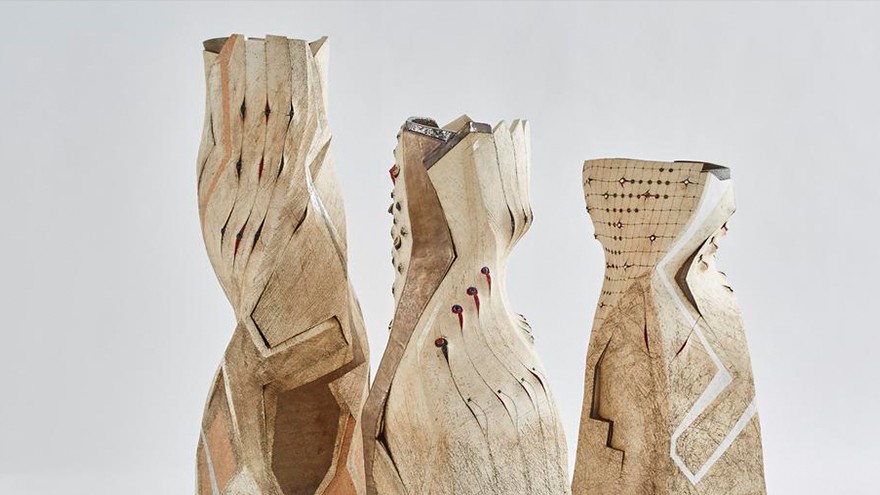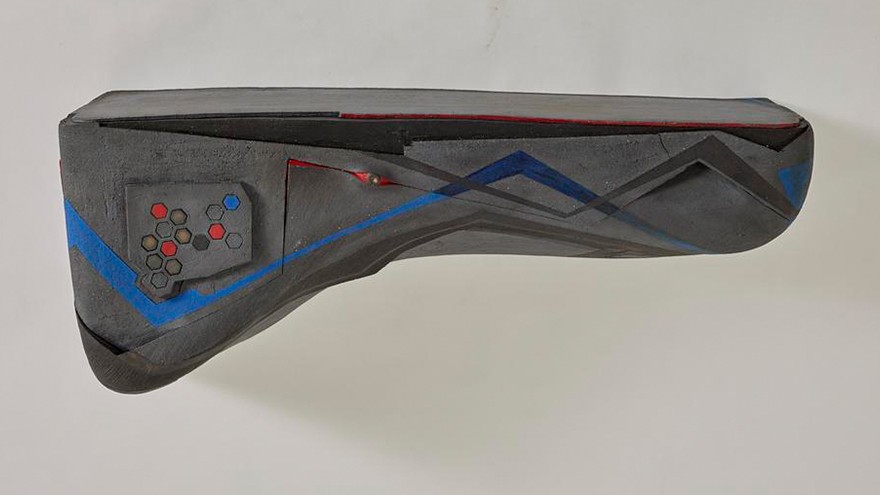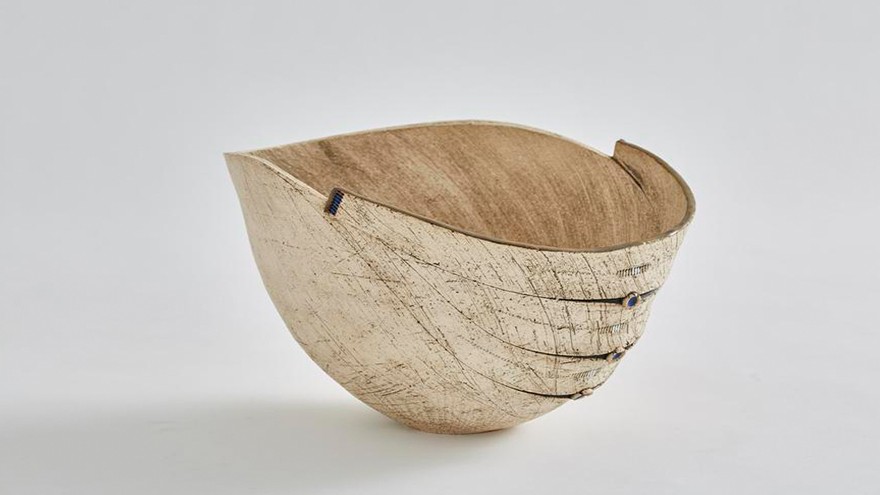Posted 20 Jun 16
By James de Villiers
African Design • Craft • Creative Economy
Interviews / Q&A
Comments
South African ceramicist Andile Dyalvane’s exhibition, Camagu loosely translates to “I am thankful”. As his first solo exhibition, Camagu includes 30 large-scale clay works that serve as a spiritual expression of gratitude towards Dyalvane’s ancestors.
The gallery describes Camagu as a landscape of small architectures, illustrating a convergence of Dyalvane’s daily urban experience in Cape Town and the everyday language of his rural birthplace in the Eastern Cape.
We spoke to Dyalvane before the start of his exhibition.
How does it feel to host your first solo exhibition?
It is an honour. I am humbled. Really, [it is] a mix of positive emotions and [I am] grateful for the opportunity to share expressions - as is the case in oral traditions in Africa for centuries – albeit my stories are relayed in clay, the narrative begins there.
What is the inspiration behind your 30-piece collection?
My journeys inspire me; I know it well – this body of work expresses the [clay] tapestries of some of the layers of my own life that I am extremely grateful for. Beginning with my home, family and early life in Ngobozana Village near Qoboqobo, Eastern Cape, South Africa.
What makes you passionate about ceramics?
Clay breathes, it’s alive with becoming and moves with my energy, listens and holds only what I’ve impressed upon it – it remembers and let’s go in the fire then becomes stronger. If clay was a song it would sing of the layers of life really, it’s the creators deepest perhaps.
How did you start working with ceramics?
Growing up in Ngobozana, I experienced clay from the dongas at a young age. I never knew about ‘ART’ much less design. As a boy, we would get lashings for being distracted by drawing in our classroom. I played with clay, making village scenes and cattle figurines with it. When I came to Cape Town, I found freedoms and took up what I was lashed for, I drew. I drew all that I could, nearly all the time say for daily chores, eat and sleep. When ‘introduced’ to clay at College it was a familiar material in fact reminiscent of my childhood and since I was studying a familiar sensation that had me as a young boy, I felt entitled to make everything about it the best I could.
How did being an exhibitor at Design Indaba Expo 2009 help you grow your craft?
The design exposure that Design Indaba offers to those starting in the industry as creative entrepreneurs is a platform that catapults one into the arena of engaging in positive possibilities with other designers. It made it clear to me that both design and business co-exist and the importance of both relate to being able to live one’s passion, consciously aware of a larger psych response to your work. The interest in what “Imiso” does and is about certainly grew from the exposure over the years, I am grateful for the consistency of the DI platform.
What’s next for you?
Well, my sketchbook has a lot to explore and quite a bit will be realised in the near future, being part of the Friedman Benda Gallery stable of artists will allow for this. I would certainly be excited to explore within various residency programs and exercise the medium to new dimensions. The journey continues and the curiosity really never ends. I’ll be chatting at Business of Design in August and perhaps a reveal of what’s ahead may feature within the conversations have there.
Camagu is expected to open on 23 June at the Friedman Brenda Gallery in New York and will be run until 19 August.
Dyvalane was born in the small village of Ngobozana in the Eastern Cape of South Africa. In 1996, he enrolled at Sivuyile Technical College in Gugulethu, Cape Town where he graduated top of his class. In 2005, Dyvalane became a Design Indaba Emerging Creative. The year long programme develops young designers. Dyvalane also exhibited at the Design Indaba expo in 2009 and 2010.









